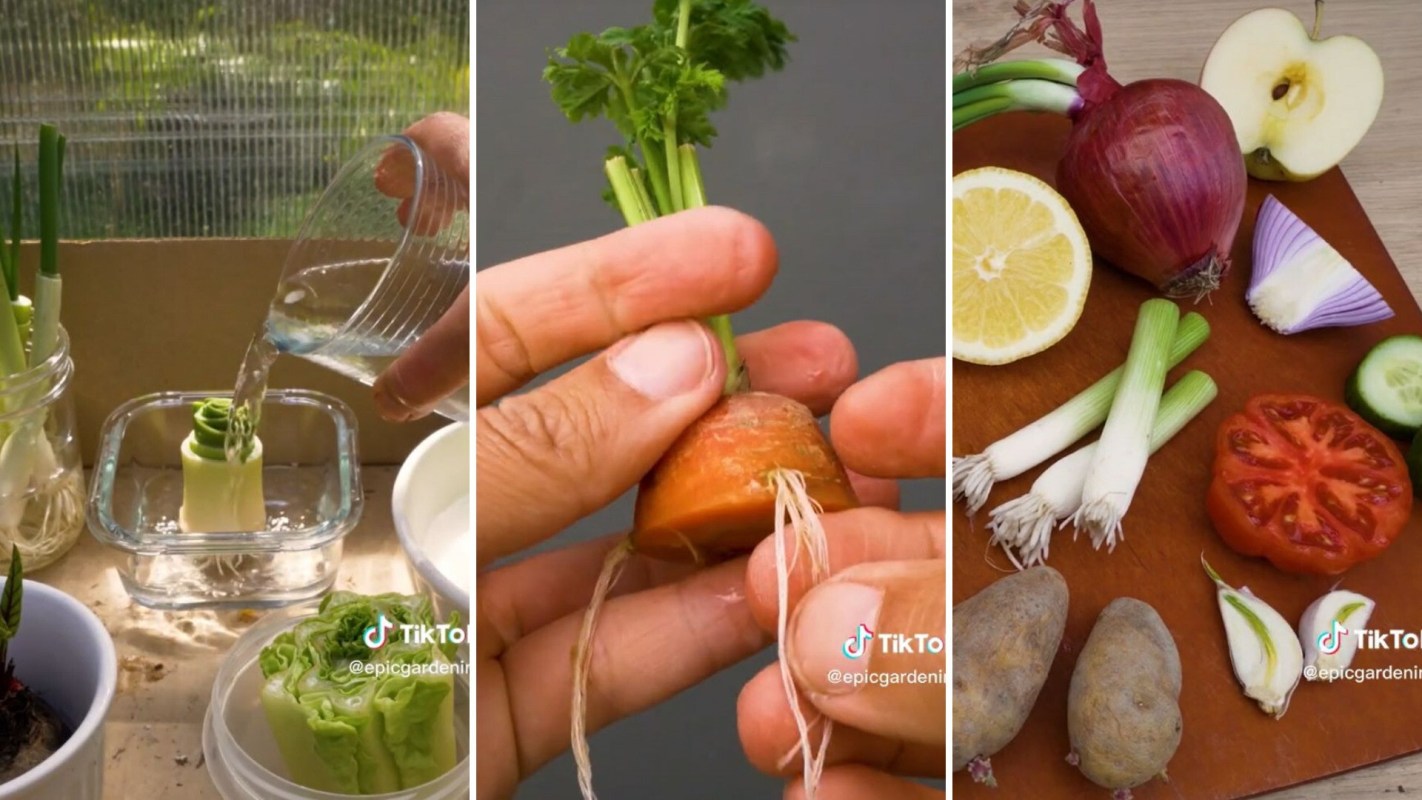Before you head to the store for some seeds in your next planting season, you should check to see if you can regrow the produce already in your kitchen.
Thanks to one TikToker's viral video, it's easy to learn how. In his clip, Kevin Espiritu (@epicgardening) shares which fruits and vegetables are perfect for regrowing — and, notably, which ones aren't.
@epicgardening Many of the food scrap regrowing hacks *work*, but not quite the way you think! The best ones to regrow are leafy greens like lettuce, spinach, kale, or alliums like green onions, leeks, etc. Fruit tree seeds WORK but take years and often don't product the same variety they came from, and root crops typically only regrow the top greens...which are edible, but not often consumed. #garden ♬ original sound - Epic Gardening
The scoop
The fruits and vegetables in your fridge or pantry can sometimes be replanted to yield even more produce. To save you from weeks of trial and error, Espiritu attempted to regrow the most common plants and revealed the results.
"You've probably seen these hacks all over the internet," Espiritu says in the video. "But do they actually work?"
Espiritu discovered that the easiest plants to regrow are green onions, celery, and lettuce. They are prime candidates for regrowth because we eat these plants' stalks and leaves.
To regrow these plants, Espiritu recommends rooting them in water or soil. Eventually, you'll get a second harvest and enjoy these vegetables all over again.
Unfortunately, Espiritu did not have the same luck with other fruits and vegetables.
Fruit tree seeds are difficult to regrow because they take years to produce. And while you can regrow an avocado, Espiritu reports the plant won't produce fruit in most climates. But worry not, you can still get a cool house plant from replanting an avocado seed.
Regrowing root crops like beets and carrots will produce edible leafy growth, but you won't get another beet or carrot.
And while cucumbers have plenty of seeds, these seeds are underdeveloped when your cucumber is ripe and ready to eat. At that stage, the seeds are not viable for new growth.
How it's helping
In the last year, fruit and vegetable prices increased significantly. Almost every fruit is more expensive in comparison to 2021 prices. Strawberry prices have increased by 25%, apples by 6.6%, and lemons by 3.5%.
Lettuce is the frontrunner for vegetables, with prices increasing by 24.9% since 2021. Tomatoes and potatoes had a significant jump as well, increasing by 16.9% and 22%, respectively.
Growing your own fruit and vegetables has environmental benefits as well. Locally grown produce helps reduce harmful carbon pollution. Fruits and vegetables you buy at the grocery store often travel hundreds of miles using dirty energy sources before they reach the shelves.
Produce only has to travel the distance between your garden and kitchen, which means no wasteful plastic packaging is required. Home gardens use fewer pesticides and chemicals in home gardens, preventing soil and water contamination and protecting birds, fish, and insects.
What everyone's saying
Fellow TikTokers were grateful for Espiritu's regrowing tips in the comment section.
"These are always very informative, especially for new gardeners," one user writes.
"He ain't lying," another user says. "He knows."
"Infinite celery hack," a TikToker adds.
Join our free newsletter for easy tips to save more, waste less, and help yourself while helping the planet.









